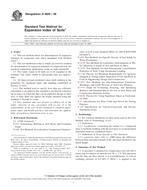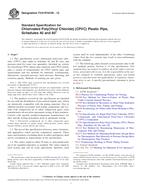1.1 This practice addresses the techniques of measurement and reporting of basic static performance (accuracy, repeatability, and so forth) of surgical navigation and/or robotic positioning devices under defined conditions. The scope covers the tracking subsystem, testing only in this practice the accuracy and repeatability of the system to locate individual points in space. A point in space has no orientation; only multi-dimensional objects have orientation. Therefore, orientation of objects is not within the scope of this practice. However, in localizing a point the different orientations of the localization tool can produce errors. These errors and the orientation of the localization tool are within the scope of this practice. The aim is to provide a standardized measurement of performance variables by which end-users can compare within (for example, different fixed reference frames or stylus tools) and between (for example, different manufacturers) different systems. Parameters to be evaluated include (based upon the features of the system being evaluated):
(1) Location of a point relative to a coordinate system.
(2) Relative point to point accuracy (linear).
(3) Repeatability of coordinates of a single point.
(4) For an optically based system, the range of visible orientations of the reference frames or tools.
(5) This method covers all configurations of tool arrays in the system.
1.2 The system as defined in this practice includes only the tracking subsystem (optical, magnetic, mechanical, and so forth) stylus, computer, and necessary hardware and software. As such, this practice incorporates tests that can be applied to a prescribed phantom model in a laboratory or controlled setting.
1.3 This practice defines a standardized reporting format, which includes definition of the coordinate systems to be used for reporting the measurements, and statistical measures (for example, mean, standard deviation, maximum error).
1.4 This practice will serve as the basis for subsequent standards for specific tasks (cutting, drilling, milling, reaming, biopsy needle placement, and so forth) and surgical applications.
1.5 The values stated in SI units are to be regarded as standard. No other units of measurement are included in this standard.
1.6 This standard does not purport to address all of the safety concerns, if any, associated with its use. It is the responsibility of the user of this standard to establish appropriate safety and health practices and determine the applicability of regulatory limitations prior to use.
Product Details
- Published:
- 12/01/2010
- Number of Pages:
- 11
- File Size:
- 1 file , 740 KB


